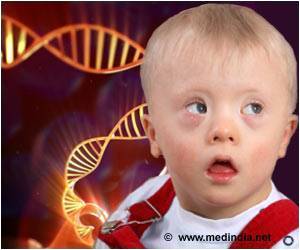Researchers at the University of North Carolina at Chapel Hill have discovered that commonly occurring variations of a gene trigger a domino effect in chronic pain disorders.
Researchers at the University of North Carolina at Chapel Hill have discovered that commonly occurring variations of a gene trigger a domino effect in chronic pain disorders. The finding might lead to more effective treatments for temporomandibular joint disorder (TMJD) and other chronic pain conditions.
Catechol-O-methyltransferase (COMT), an enzyme that metabolizes neurotransmitters such as epinephrine, norepinephrine and dopamine and that has been implicated in the modulation of persistent pain, as well as cognition and mood, is regulated by a gene, also called COMT. Previous UNC-led research showed that common genetic variants of this gene are associated with increased pain sensitivity and the likelihood of developing TMJD.Now, the researchers have discovered that specific variants of the COMT gene can dramatically affect the secondary structure of corresponding messenger RNA - which, in turn, leads to alterations in the amount of enzyme crucial for regulating pain processing. The discovery is published in the Dec. 22 issue of Science.
"TMJD is a complex pain condition that is frequently associated with other pain conditions such as fibromyalgia syndrome, chronic headaches and irritable bowel syndrome," said Dr. William Maixner, director of the Center for Neurosensory Disorders in UNC's School of Dentistry and a study co-author. "This study has identified a new genetic mechanism that influences an individual's susceptibility to develop chronic pain conditions such as TMJD," Maixner said.
The study was conducted to understand the mechanism by which the identified genetic variants influence enzymatic activity and, ultimately, biological functions such as pain transmission. The researchers found that three major variants of COMT show significant differences in how they code for the secondary structure of messenger RNA, or mRNA. The differences lead to dramatic alterations in protein expression, which substantially influences pain sensitivity in humans.
These findings are clinically important because pain conditions resulting from low COMT activity or elevated catecholamine levels are likely to be susceptible to treatment with pharmacological agents that block beta 2- and beta 3-adrenergic receptors, which mediate COMT-dependent pain signaling, or that control mRNA secondary structure.
"Elucidating the genetic mechanisms that mediate pain perception will provide new insights into how chronic pain develops and will ultimately contribute to the identification of unique markers for diagnosing clinical pain conditions, as well as provide novel targets for the development of effective individualized therapeutics for TMJD and related conditions," said Dr. Andrea Nackley Neely, a research assistant professor in the Center for Neurosensory Disorders and the study's lead author.
"This study provides additional evidence of a genetic, molecular and physiological basis for pain perception and human pain conditions and should help to remove the stigma associated with conditions such as TMJD and fibromyalgia," said Dr. Luda Diatchenko, an associate professor in the center and the study's chief investigator.
SRM
 MEDINDIA
MEDINDIA
 Email
Email








